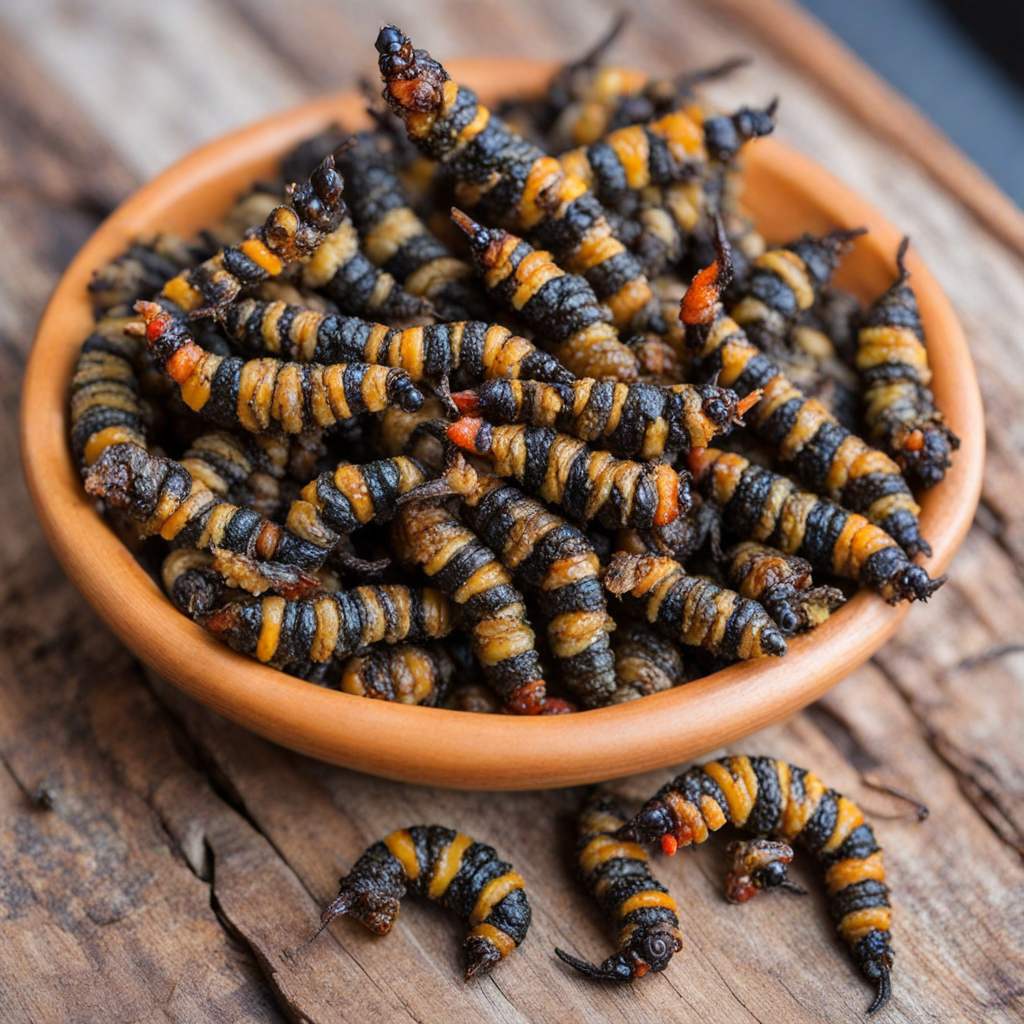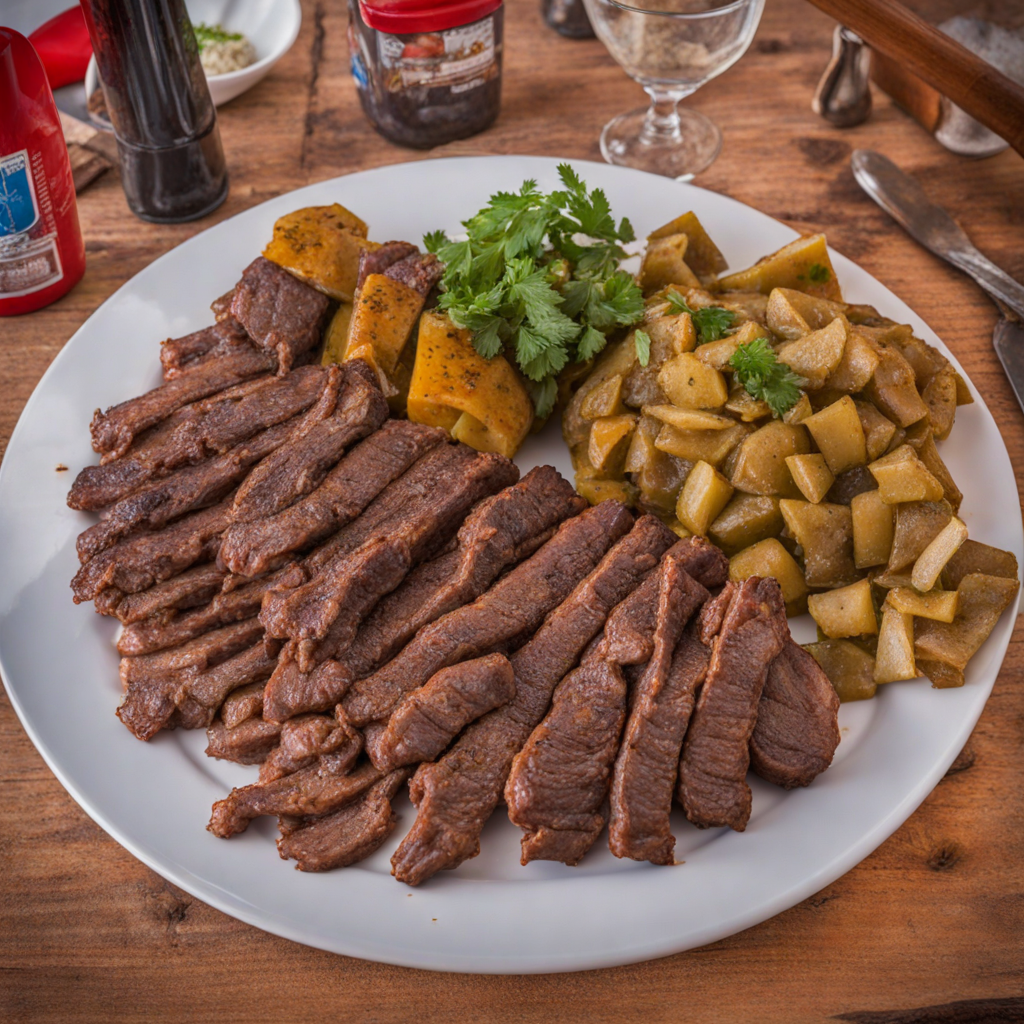Mopane Worms
Mopane worms, known as "mopane larvae," are the edible caterpillars of the Emperor Moth, scientifically referred to as Gonimbrasia belti. These worms are primarily found in the mopane tree (Colophospermum mopane) forests of southern Africa, particularly in Namibia, Botswana, and Zimbabwe. The consumption of mopane worms has a deep-rooted history in the local cultures, where they are not only a source of nutrition but also an integral part of the traditional culinary practices. For many communities, they represent a seasonal delicacy, typically harvested during the rainy season when the larvae are most abundant. The flavor profile of mopane worms is unique and complex. When cooked, they boast a rich, earthy taste with a hint of umami. Some describe the flavor as somewhat similar to that of mushrooms, while others note a slightly nutty undertone. The texture varies depending on the preparation method; when fried, they become crispy and crunchy, while boiling or stewing can yield a softer, chewier consistency. The worms can also absorb the flavors of accompanying spices and ingredients, making them versatile in various dishes. Preparation of mopane worms can be quite simple, yet it varies widely across different regions and households. Typically, the harvesting process involves collecting the larvae from mopane trees, where they are found in their caterpillar stage. After collecting, the worms are usually cleaned and then sun-dried to enhance their shelf life. Dried mopane
How It Became This Dish
The Engaging History of Mopane Worms in Namibia Introduction Mopane worms, or *Gonimbrasia belti*, are the larvae of the Emperor Moth, a species prevalent in Southern Africa, particularly in Namibia, Botswana, and Zimbabwe. These edible caterpillars hold a significant place in the culinary landscape and cultural heritage of Namibia. This essay delves into the origin, cultural significance, and historical development of mopane worms, illustrating their journey from humble beginnings to a celebrated delicacy. Origins The story of mopane worms dates back centuries, intertwining with the traditions of various ethnic groups in Southern Africa. These larvae are primarily found in mopane trees (*Colophospermum mopane*), which thrive in the arid savannas of Namibia and neighboring countries. The environmental conditions of this region, characterized by a seasonal climate with distinct wet and dry periods, make it an ideal habitat for both the mopane trees and their larvae. The harvesting of mopane worms is traditionally linked to the rainy season, typically from January to March, when the moths lay their eggs. As the larvae feed voraciously on the leaves of mopane trees, local communities have learned to identify the prime harvesting periods, a practice passed down through generations. This deep-rooted knowledge not only highlights the adaptability of the communities but also showcases their sustainable relationship with the environment. Cultural Significance Mopane worms are more than just a source of protein; they are a cultural symbol for many Namibian communities, particularly the Ovambo, Herero, and San people. The harvesting, preparation, and consumption of mopane worms are steeped in cultural rituals and communal practices. For many families, the collection of mopane worms is a communal event, often involving entire households. This practice fosters social bonds and reinforces community ties, as families gather to share knowledge, stories, and the labor involved in the harvest. In traditional Namibian cuisine, mopane worms are prepared in various ways, often dried, fried, or stewed, and served as a side dish or a main course. The nutritional benefits of mopane worms cannot be overstated; they are rich in protein, iron, and essential fatty acids, making them a vital food source, especially in regions where other protein sources may be scarce. In this way, mopane worms also play a crucial role in food security, acting as a reliable source of sustenance during droughts or lean seasons. Historical Development The development of mopane worms as a food item has evolved alongside the changing socio-economic landscape of Namibia. Historically, mopane worms were primarily foraged and consumed by local communities. However, with the advent of modernity, these traditional practices began to diversify. As urbanization took hold and people migrated to cities, the demand for mopane worms increased beyond local consumption. In the late 20th century, particularly after Namibia gained independence in 1990, there was a renewed interest in indigenous foods, including mopane worms. This interest was fueled by a growing awareness of the importance of traditional diets and the nutritional value of indigenous food sources. Organizations and NGOs began to promote the harvesting and commercialization of mopane worms, recognizing their potential as a sustainable food source and a means of economic empowerment for rural communities. Commercial harvesting of mopane worms has led to the establishment of small businesses and cooperatives that engage in the production and sale of processed mopane worms. These enterprises have provided income and employment opportunities for many women, who are often the primary harvesters and processors. The commercialization of mopane worms has also spurred interest from culinary enthusiasts and chefs, both locally and internationally, who have embraced this unique ingredient in their dishes. Global Recognition and Culinary Innovation In recent years, mopane worms have gained international recognition as a delicacy, celebrated for their unique flavor and nutritional benefits. Food tourism has introduced these larvae to a broader audience, with travelers seeking authentic culinary experiences. As a result, mopane worms have made their way onto the menus of upscale restaurants, food festivals, and gourmet food shops, showcasing their versatility in dishes ranging from stir-fries to gourmet tacos. Culinary innovation has led to new ways of presenting mopane worms, blending traditional recipes with contemporary cooking techniques. Chefs are experimenting with flavors and textures, incorporating mopane worms into fusion dishes that highlight this traditional ingredient while appealing to modern palates. This transformation has sparked conversations around edible insects, sustainability, and the importance of preserving culinary heritage in a rapidly globalizing world. Challenges and Future Prospects Despite the growing popularity of mopane worms, challenges remain. Overharvesting and unsustainable practices threaten the availability of this resource. Climate change poses additional risks to the ecosystems that support mopane trees and their larvae. To mitigate these challenges, it is essential to implement sustainable harvesting practices and educate communities about the importance of preserving their natural resources. Furthermore, the commercialization of mopane worms must be balanced with respect for traditional practices and the communities that have relied on them for generations. Empowering local harvesters and processors through fair trade initiatives and sustainable practices can ensure that the benefits of mopane worm commercialization are shared equitably. Conclusion Mopane worms are a fascinating example of how food can embody cultural identity, sustainability, and innovation. From their origins in the arid landscapes of Namibia to their rise as a celebrated delicacy, mopane worms reflect the resilience and adaptability of local communities. As interest in indigenous foods continues to grow, the future of mopane worms looks promising, with the potential to foster economic development while preserving cultural heritage and promoting environmental sustainability. Embracing this unique food not only enriches our culinary experiences but also deepens our appreciation for the stories woven into the fabric of local traditions.
You may like
Discover local flavors from Namibia







